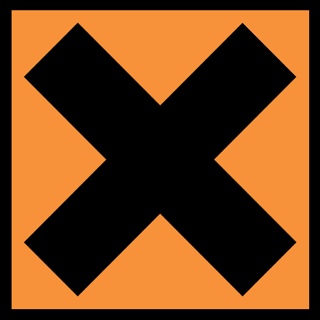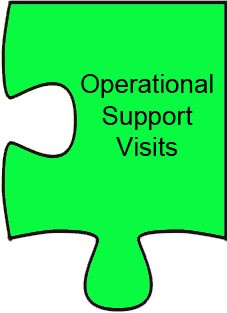Information
-
Incident Number
-
Brief description of the Incident (e.g Petrol leak from overturned tanker). NB this text will form the title on the cover of the final report.
-
HMEPOs Name
-
Premises name or location
-
Address
-
Conducted on
Analysis of the Incident
Incident Description.
-
Provide a brief description of what's happened.
-
If approriate please add photos / media to assist with the incident description.
1) Information Sources.
-
Please select the sources of information used.
- Chemdata
- Emergency Response Guide (ERG)
- Dangerous Goods Emergency Action Code List
- Material Safety Data Sheet (MSDS)
- Placards Labelling or Packaging
- Person on scene (e.g lorry driver)
- On Site Specialist
- Incident Commander
- On Site Plan
- ORIS/7.2.d
- Other
-
Please indicate Chemdata version number, document number and what information retrieved (e.g Flash Point, Boiling Point etc).
-
Please indicate ERG version, state which Generic Guide Number used and what information retrieved (e.g initial isolation distance).
-
Please indicate Dangerous Goods List version (e.g 2011) and information retrieved.
-
Please indicate MSDS source and information retrieved.
-
Please indicate labelling information retrieved (e.g EAC, UN no etc)
-
If approriate please add photos / media to assist.
-
Please record the name of person on scene, the time and information retrieved.
-
Please record the name of the specialist, the time and the information retrieved.
-
Please record the Role and Name of the IC, the time and the information retrieved.
-
Please record detail of information retrieved from the On Site Plan (e.g containment facilities, isolation points etc)
-
If approriate please add photos / media to assist.
-
Please indicate information retrieved from ORIS/7.2.d.
-
If approriate please add photos / media to assist.
-
If OTHER please note source and information retrieved.
-
If approriate please add photos / media to assist.
2) Quantify the Scale of the Incident.
-
Is this Large or Small Scale?
-
Estimate Quantities Involved (litres/kgs) e.g 2 x 1,000 ltr IBCs
-
What is the potential worse case scenario?
-
What is the required hazard zone
- 25 metres
- 50 metres
- 100 metres
- 200 metres
- 400 metres
- 600 metres
- 1000 metres
- Other
-
Please enter the extent of the hazard zone here.
-
If applicable what is downwind extended distance?
Assessment of the Hazards and Risk
3) Identify the Hazards.
-
What are the hazards?
- Chemical hazards
- Physical hazards
- Reactions with other substances
-
Detail the chemical hazards? (e.g highly flammable, can form explosive mixture in air)
-
Detail the Physical hazards? (e.g pressurised container, Cryogenic liquid)
-
Detail how the material might react? (e.g reacts with acids and oxidising agents)
4) Interpret the Physical Properties.
-
What Physical Properties are relevant to this incident?
- Flash Point
- Vapour Pressure
- Boiling Point
- AEGL 3
- Vapour Denisty
- Auto Ignition Temperature
- LEL
- Flammable range
- pH - corrosiveness
- Relative Density
- Solubility
- Miscibility
- Other
-
What is the Flash Point risk
-
Please record the Flash Point and comment on what effect this is likely to have at this incident?
-
What is the Vapour Pressure risk?
-
Please record the Vapour Pressure and comment on what effect this is likely to have at this incident?
-
What is the Boiling Point Risk?
-
Please record the Boiling Point and comment on what effect this is likely to have at this incident?
-
What is the AEGL Risk?
-
Please record the EAGL 3 and comment what effect this is likely to have at this incident? (Please note - nothing with an AEGL is low toxicity - does a little or a very little kill?)
-
What is the Vapour Density Risk?
-
Please record the Vapour Density and comment on what effect this is likely to have at this incident?
-
What is the Auto Ignition Temperature Risk?
-
Please record the Auto Ignition Temperature and comment on what effect this is likely to have at this incident?
-
What is the LEL Risk?
-
What is the LEL and what effect is this likely to have at this incident?
-
What is the Flammable Range risk?
-
Please record the Flammable Range and comment on what effect this is likely to have at this incident?
-
What is the Corrosive risk?
-
Please record the pH and comment on what effect this is likely to have at this incident?
-
Is the substance heavier or lighter than water?
-
Please record the Relative Density and comment on what effect this is likely to have at this incident? (e.g will it float or sink in water)
-
Will the substance mix with water?
-
Please record the Solubility/miscibility and comment on what effect this is likely to have at this incident? (e.g will it dissolve in water?)
-
Please record what other Phys Props you used and comment on what effect these are likely to have at this incident?
5) Identify Who/What is at Risk.
-
Who is at Risk? (Indicate the risk level prior to any control measures).
- Firefighters
- Other Emergency Responders
- Public
- Environment
-
Firefighters
-
Other Emergency Respoders
-
Public
-
Environment
Plan the Response
6) Level of PPE, Contamination Risk and Decon Strategy.
-
Select appropriate level of PPE
-
Please detail what PPE you have advised.
-
If undertaking two tasks (e.g snatch then dealing with a spill) detail the difference in PPE.
-
Provide advice on exposure conditions (e.g avoid contact with product)
-
Identify contamination risk (e.g contamination risk minimal, hands & feet only)
-
Identify Decontamination method required
- Emergency/contaminated clothing
- Mass Decontamination (MD2)
- Full Wet (MD4)
- Dry
- Wet (Bucket & Sponge)
- Hose Reel Damp Down with Respirator
- Other
-
Please indicate what other decontamination method is required.
-
Identify if Decon products should be contained or diluted.
7) Risk Control Measures.
-
What Control Measures do you advise upon?
- Safe Approach
- Cordons
- Crew Size
- Public Safety considerations & Evacuation
- Tactics
- Firefighting Media
- Vapour Cloud Dispersal / Suppression
- Other
-
What is your advice to the IC regarding 'Safe Approach' (e.g approach upwind, avoidance route etc)
-
What is your advice to the IC regarding 'Cordons' (e.g inner cordon 150m, downwind protection 800m etc)
-
What is your advice to the IC regarding 'Crew Size' (e.g minimum crews to achieve task, 1st team (2) snatch rescue, 2nd team (4) isolate leak etc)
-
What is your advice to the IC regarding 'Public Safety/Evacuation' (e.g Public safety hazard - advised to stay indoors windows closed, evacuate public and staff to outside outer cordon etc)
-
What is your advice to the IC regarding 'Tactics' (e.g Snatch rescue of driver with decon/first aid, 2nd crew to isolate leak etc)
-
What is your advice to the IC regarding 'Firefighting Media' (e.g Attack jet with spray branch, CAF foam equipment laid out etc)
-
What is your advice to the IC regarding 'Vapour Cloud Dispersal/Suppression ' (e.g vapour suppression using foam, fine sprays and water curtain on down wind side etc)
-
What other advice do you have for the IC (e.g strict control of ignition sources,no eating, drinking or smoking etc)
Environment and Liaison
8) Environmental Protection Measures.
-
Identify the Environmental Vulnerability.
-
Identify the source.
-
Identify the pathway.
-
Identify the receptor.
-
Detail the pollution control strategy.
9) Liaison.
-
Indicate which other agencies have been involved
- Police
- Ambulance
- Environment Agency
- Local Authority
- Highways Agency
- Utility Company
- Bureau Veritas
- Other Specialist Advice
- Operator/Company
- Public Health England
- Waste Disposal Company
- Other
-
State what information/assistance you received from the Police
-
State what information/assistance you received from the Ambulance Service.
-
State what information/assistance you received from the EA.
-
State what information/assistance you received from the Local Authority.
-
State what information/assistance you received from Highways Agency
-
State which Utility Company and what information/assistance you received.
-
State what information/assistance you received from Bureau Veritas.
-
State what information/assistance you received from the Specialist Advice.
-
State what information/assistance you received from the Operator/Company.
-
State what information/assistance you received from Public Health England.
-
State what information/assistance you received from the Waste Company.
-
State what other agencies you liaised with and what information/assistance you received.
Post Incident
10) Post Incident Considerations
-
Indicate what personal exposure records will be required.
- Form 011 (Personal Exposure)
- Form 012 (Record of all personnel attending)
- eS9 (required if Form 011 submitted)
- Other
-
Prompt: This will also require further investigation so please ensure eS9 is ticked in previous question.
-
Provide brief details of why Form 011 is required.
-
Provide brief details of why Form 012 is required.
-
Provide brief details of why an eS9 is required.
-
Provide brief details of what other documentation is required and why.
-
How should contaminated kit and equipment be treated?
-
Please state how the contaminated kit and equipment was treated.
-
Is product recovery/disposal required
-
Who is responsible for product recovery/disposal. (Is this noted in the Incident Handover Form/Decision Log)
-
Provide any further advice that should be included in the Incident Handover Form.
-
Indicate what level of debrief is appropriate to assist with Organisational Learning.









